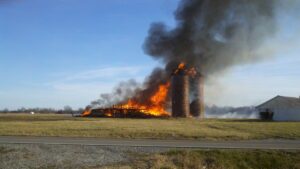
Pre-Incident Plans – the Building Official’s Contribution
“A pre-incident plan is one of the most valuable tools available for aiding responding personnel in effectively controlling an emergency.” NFPA 1620, A.4.1.1 NFPA 1620,

“A pre-incident plan is one of the most valuable tools available for aiding responding personnel in effectively controlling an emergency.” NFPA 1620, A.4.1.1 NFPA 1620,

What if we started.. not with long-established theories, but with humanity’s long-term goals, and then sought out the thinking that would enable us to achieve

If a building is on fire, how much water is needed to put the fire out? The presence of hydrants is a hopeful sign, but it should never be taken for granted that water will actually be produced in the quantities needed, or even any at all.

No matter where you live, there is a lot you can do to increase the chance of the fire department having something valuable to save when it arrives.
Disclaimer:
Kilo Lima Community (Blog and Forum) is a platform to share ideas, ask questions and to foster discussion. The perspectives and opinions expressed in blog posts and the daily forum are those of the individual commentator and/or contributor and may not reflect the opinions and view of other readers, authors, or Kilo Lima. The information in this community is intended for educational and thought provoking purposes only and must not be construed as advice. We encourage everyone requiring code advice to consult with a building or fire code expert or their local AHJ.
Kilo Lima Code is on a mission to demystify the Canadian Construction Codes so you can keep doing great work with faster access to better resources.
Subscribe to know when new posts, tools, and courses are released.
© Copyright 2020 Kilo Lima Code | Website Design by Toro Creative Co.